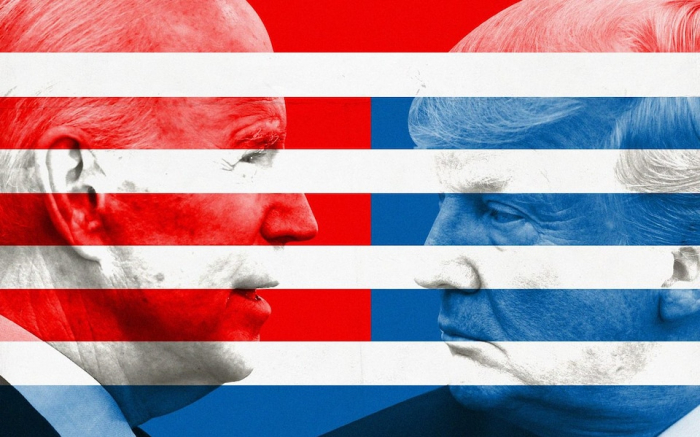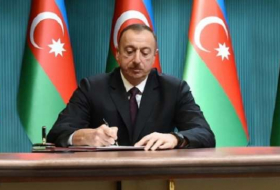The 2020 US election is today. After a gruelling campaign, voters will enter booths across America in the next few hours and cast their ballots.
But the coronavirus pandemic has thrown many aspects of the race into uncertainty.
The virus has already dramatically affected the running of the election, including the chaos caused by Donald Trump being diagnosed with Covid-19.
It is also unclear what election day itself will look like, given the risk of catching the virus by voting in person.
A record number of people have already cast their ballots by post. Election experts suggest this could mean the result may not be declared on election night, but may take several days - or even weeks - to emerge.
With the coronavirus pandemic expected to impact public life well into next year, the 2020 election is likely to go down in history as one of the most unconventional US presidential races ever held.
Despite the uncertainty, there are some aspects of the election process that are enshrined in the US constitution.
Here is everything we know about how the race will play out.
What date is the 2020 US election?
The election will be held on Tuesday, November 3.
Donald Trump had floated delaying it, in a tweet which suggested the rule changes making it easier for voters to use postal ballots in many states could lead to a “rigged election”.
Mr Trump has argued that, despite using it himself in the past, mail-in voting is more open to fraud. Most election experts have questioned whether it is possible for postal voting to lead to widespread fraud, as Mr Trump claims, but have pointed out that an anticipated rise in postal voting could cause problems.
The election date is not written into the US Constitution, so a delay is technically possible, but the Constitution does outline a date for the newly elected president's inauguration in January.
However, the power to change the election date lies with the US Congress, and the Democrats hold the majority in one chamber, the House of Representatives, which made it extremely unlikely that a delay would have been approved.
The US Election in a nutshell
The American presidential elections are always held on the Tuesday after the first Monday in November.
Americans vote for people called "electors" in their state who are supporting the candidate they want to become president - this process is called the electoral college.
The more people who live in a state, the more electors there are for that state. So California for example, with a population of 38.8 million, has 55 votes - while Delaware, (population 936,000), has just three votes.
There are currently 538 electors in total, corresponding to the 435 Representatives (Congress men and women) and 100 Senators, plus the three additional electors from the District of Columbia. The Constitution prohibits any federal official, elected or appointed, from being an elector.
The candidate with the most electors wins all the state's electoral college votes and the first candidate to win enough states to get to 270 electoral votes is elected as president.
How does the electoral college work?
All 50 US states and Washington DC have a set number of "electors" in the electoral college – roughly proportionate to the size of each state.
Each state gets at least three electoral votes because the amount is equal to its total number of Senators and Representatives in the US Congress. Washington DC also gets three electoral college votes, meaning a total of 538 electors form the Electoral College.
California, the largest state, has 55 electoral votes, Texas, the next largest, gets 38. New York and Florida have 29 each.
All but two states – Maine and Nebraska – use a winner-takes-all system, so if you win the most votes in a state, you take its entire haul of electoral college votes.
To become president either candidate needs to win a majority of the 538 electors - i.e. 270 electors.
While the Constitution does not dictate that electors follow the popular vote, many US states have laws requiring them to do so. These laws have been challenged by electors voting for someone else on occasion, but in July, the US Supreme Court ruled that electors must follow the popular vote in states that have passed such a law.
The electoral college system does usually reflect the popular vote – presidents have won the electoral vote while losing the popular vote just five times in US history. The most recent instance was in 2016, when Donald Trump won the electoral college but Hillary Clinton, his Democratic opponent, won the popular vote.
Who can become president?
The President of the United States can be a man or a woman of any race or any religion, but they must:
- be at least 35 years old
- have been born in the US
- have lived in the US for at least 14 years
The rules also state that one person can be in the job for a maximum of two terms. (The only exception to this was Franklin D Roosevelt, who was elected for a special third term at the height of World War Two.)
How does US election voting work?
The presidential election vote is a simple choice between candidates from the Democratic Party and the Republican Party. Occasionally a third party candidate will enter the race, like Kanye West this year, but it is quite rare for them to gain traction or make a significant impact.
The two main political parties hold primaries and caucuses across the country during an election year to select who they want to represent them on the ballot. Read more about that process here.
The Democratic and Republican candidates are then formally selected and announced during their parties' summer conventions.
The US election system itself is far from straightforward. That is because when America's founding fathers created the system in 1787, there was no way a presidential candidate could mount a national campaign – and there was little in the way of national identity.
The founding fathers chose not to elect US presidents by direct popular vote over fears that larger and more populous states could have an outsized role in deciding the winner.
The system of electors, based loosely on the Roman Catholic College of Cardinals selecting the Pope, was chosen with the theory that the most knowledgeable and informed individuals from each state would select a president on merit, disregarding state loyalties.
So when Americans cast their vote on November 3, they technically vote for "electors", not the candidates themselves. The electors are state officials or senior party figures, but they are not usually named on the ballot.
Each elector casts one vote following the general election for one of the two candidates. The newly elected president and vice-president will then be inaugurated on January 20, 2021.
What are swing states?
The key for either party to win the presidential election is to target specific battleground states. There are several swing states, that over recent elections have gone both ways. They hold the key to winning the election.
This year North Carolina, Florida, Michigan, Wisconsin, and Arizona could all be decisive in the election's outcome.
What happens on Election Day?
On November 3, voters who have not sent a mail-in ballot will head to the polls. The colossal task of counting votes begins later that day.
Millions of Americans will vote on Election Day.
Some news networks and pollsters will publish projected results late on November 3, though these results are provisional while mail-in ballots are counted.
What time do voting polls open and close?
The opening and closing times for polling stations vary from state to state, in some cases by city or county.
Some states allow people waiting in the queue when the polling station closes to cast their vote – some do not.
Most polls open at 6am and the latest they stay open is until 9pm (in New York and North Dakota).
In Vermont, early-risers can cast their vote at 5am.
All polling stations will close by 9pm ET on November 3 (2am UK time on November 4).
Election results timetable
Mail-in ballots can be received late and will still be counted in many states.
Most mail-in ballots must be received within a couple of days of November 3, with a few exceptions. Some key states allow ballots to be sent in late, including Pennsylvania and North Carolina (by November 6), Minnesota and Nevada (by November 10), and Ohio (by November 13).
Each state begins to certify its results from November 10, though this too can be delayed if there is a recount. Every state except California must complete the certification by December 8. All disputes – including challenges and recounts – must be resolved by this date.
Electors formally cast their votes on December 14 and send them to Washington.
This means that the clear result of the election – which has been drastically impacted by postal ballots because of coronavirus – might not be known until some time after Election Day.
How many electoral votes are needed to win?
To win the presidency, Mr Trump or Mr Biden must get more than 50 per cent of the electoral college vote. There are 538 possible electoral votes, which means 270 are required to win.
When will the winner take office?
The date on which a new president is sworn in is enshrined in the US constitution. Either Mr Trump or Mr Biden will be inaugurated on January 20, 2021.
How has coronavirus affected the election campaign cycle?
The Democratic and Republican political conventions, a staple of presidential election years, were radically different from the usual pageantry.
Joe Biden and his running mate, Kamala Harris, decided against travelling to Wisconsin to accept the Democratic presidential nomination because of coronavirus concerns. Instead, Mr Biden accepted the nomination and delivered a national address from his home state of Delaware. Ms Harris also formally accepted the vice-presidential nomination from a hotel ballroom in Wilmington, Delaware.
The Republican convention was also a pared-down affair. Much of the convention, including Mr Trump's speech, was virtual and included live speeches from different locations. The president delivered his own Republican nomination acceptance speech from the White House.
Read more: Trump and Pence vs Biden and Harris: Republican and Democratic policies compared
How did Trump's Covid-19 diagnosis affected the election?
Mr Trump initially cancelled plans to attend fundraisers and rallies.
The diagnosis marked a major blow for a president who has been trying desperately to convince the American public that the worst of the pandemic is behind it - even as cases continue to rise ahead of the November 3 election.
The US has tallied 8.94 million cases since the beginning of the pandemic. On October 29 the single-day record for new coronavirus infections was broken, recording 91,295 new cases in the 24 hours up to 8:30 pm Thursday (0030 GMT Friday) according to a real-time count by Johns Hopkins University.
It stands as the most serious known public health scare encountered by any sitting American president in recent history.
Nine days after Mr Trump's coronavirus diagnosis, he stood on a balcony at the White House and delivered an address to a crowd of a few hundred black supporters.
He spoke for 18 minutes, without coughing, and appeared well.
He said: "I'm feeling great. We got to vote these people [Democrats] into oblivion, get rid of them."
Mr Trump's doctor announced on October 10 that the President was no longer contagious - nine days after being stopped in his tracks by Covid-19.
"I am happy to report that in addition to the President meeting CDC (Centres for Disease Control and Prevention) criteria for the safe discontinuation of isolation, this morning's Covid PCR sample demonstrates, by currently recognised standards, he is no longer considered a transmission risk to others," the President's physician Sean Conley said.
Mr Trump took part in the final presidential debate on October 22 in which the two rivals traded insults with neither landing a killer blow.
The Telegraph
More about: USelections
















































